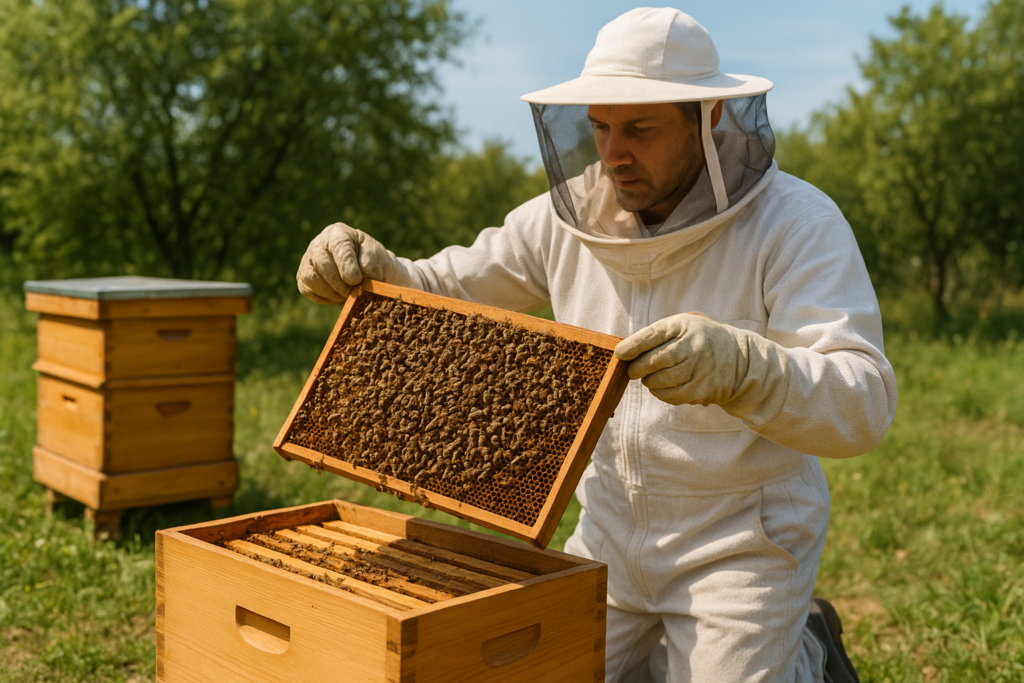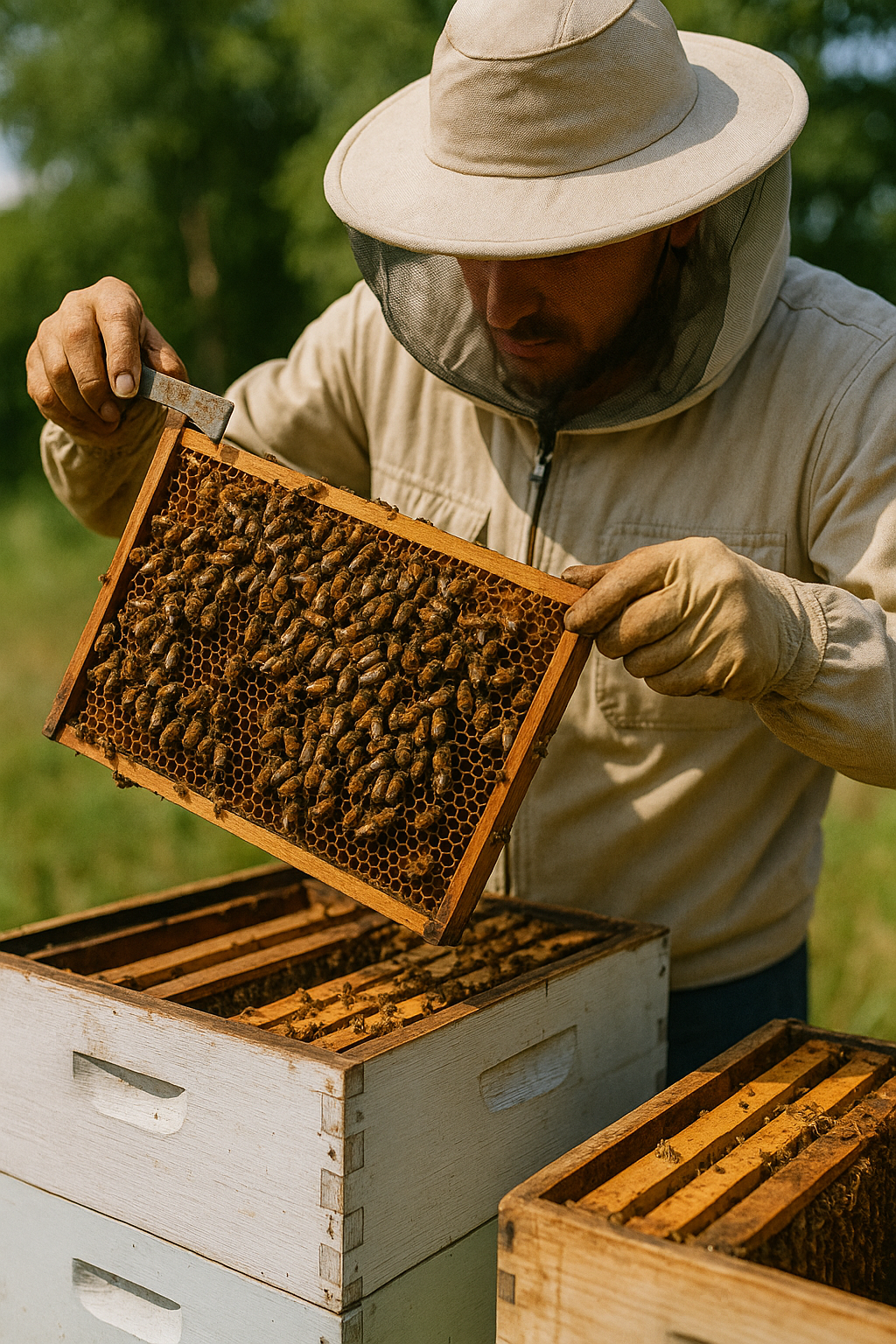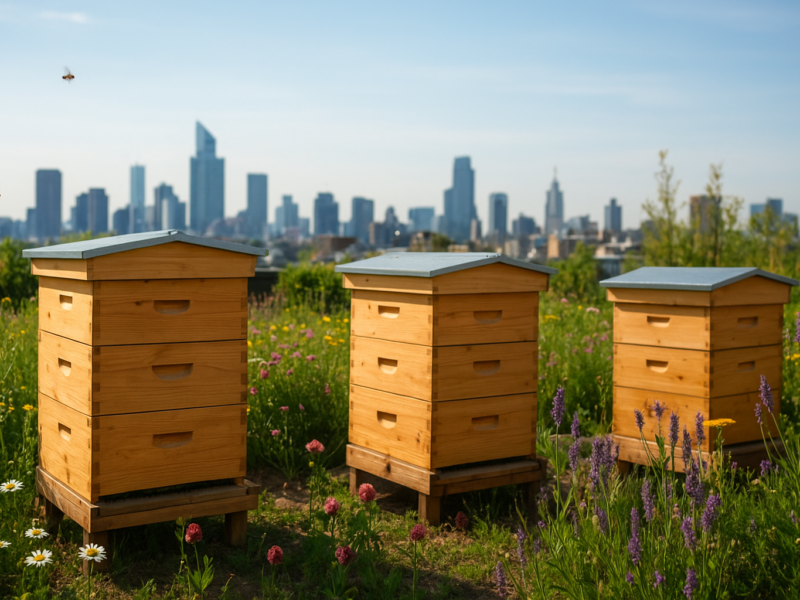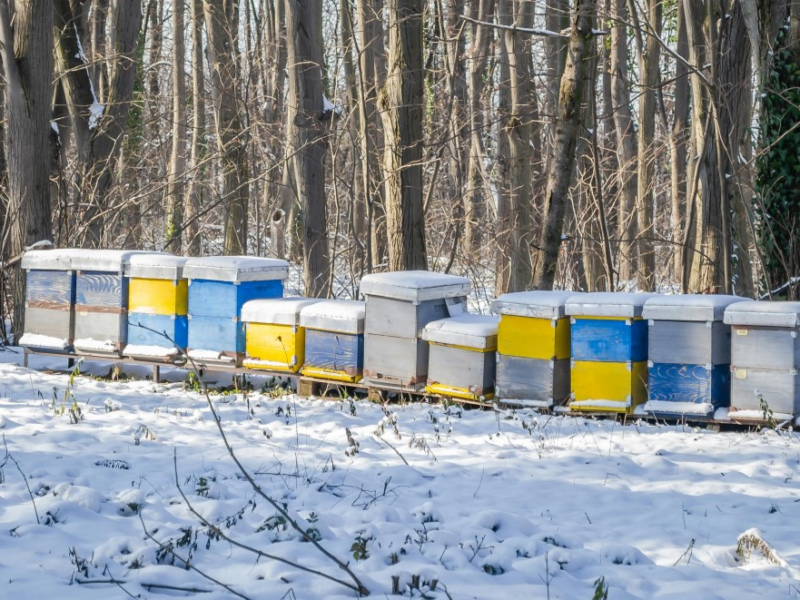Splitting a hive is one of the most important skills a beekeeper can master. It’s a method that not only prevents swarming but also allows you to expand your apiary, strengthen weaker colonies, and keep your bees productive year after year. While the process may seem intimidating to beginners, hive splitting is straightforward once you understand the steps and the biology behind it.
In this comprehensive guide, we’ll cover why hive splitting is essential, when to do it, different methods of splitting a hive, and practical step-by-step instructions to help both beginners and experienced beekeepers perform successful splits.
Why Do Beekeepers Split Hives?
Beekeepers split hives for several key reasons:
- Swarm Prevention
Bees are naturally inclined to swarm when the colony becomes overcrowded. Splitting a hive relieves congestion and reduces the bees’ impulse to swarm. - Apiary Expansion
A split allows you to create a new colony, essentially doubling your hives without having to purchase new bees. - Strengthening Colonies
Strong hives can be split to help weaker ones. By donating frames of brood or resources, beekeepers balance colony strength across the apiary. - Queen Rearing Opportunities
Splitting provides a chance for colonies to raise new queens, offering genetic diversity and backup queens for emergencies.
When Is the Best Time to Split a Hive?
Timing is crucial. Splitting at the wrong time can weaken colonies or cause failure. The ideal time is during spring to early summer when nectar and pollen are abundant, and the colony population is high.

Signs a Hive Is Ready to Split:
- Strong population: Frames are covered with bees.
- Plenty of brood: Eggs, larvae, and capped brood are visible.
- Good stores of honey and pollen: Adequate food resources to support both the parent and new colony.
- Multiple queen cells present: A strong indication the bees are preparing to swarm.
Avoid splitting late in the season (fall or early winter), as colonies may not have enough time or resources to recover before cold weather.
Different Methods of Splitting a Hive
Beekeepers can choose from several hive-splitting techniques depending on goals, colony conditions, and resources available.
1. Walk-Away Split (Beginner-Friendly)
This is the simplest method. The beekeeper divides the hive roughly in half, ensuring each side has brood, bees, and resources. One half will raise a new queen if none is present.
2. Equal Split
The colony is divided evenly: equal frames of brood, food stores, and bees. The beekeeper may purchase or introduce a new queen to one split.
3. Nucleus Split (Nuc Method)
A smaller colony (nuc) is made by taking 2–5 frames from a strong hive. The beekeeper either lets them raise their own queen or introduces a mated queen.
4. Vertical Split (Double-Stacked Hive)
Using a double brood box, the beekeeper separates the boxes with a queen excluder and eventually relocates the top hive.
Each method has benefits. Beginners often start with walk-away or nuc splits, while professionals use equal splits for better control.

Step-by-Step Guide: How to Split a Hive
Here’s a practical walkthrough for performing a hive split:
Step 1: Prepare Your Equipment
- Extra hive bodies or nuc boxes
- Frames with foundation or drawn comb
- Protective gear
- Hive tool, smoker, and feeder
- A queen cage (if introducing a purchased queen)
Step 2: Inspect the Parent Hive
Open the strong hive and check:
- Brood pattern and population
- Honey and pollen stores
- Presence of queen cells
If the colony has multiple queen cells, it’s an excellent candidate for splitting.
Step 3: Locate the Queen
Decide whether you want the queen to stay in the parent hive or move to the new split. Beginners often leave the queen with the original colony.
Step 4: Transfer Frames
- Move 3–5 frames of brood (with eggs, larvae, and capped brood) to the new hive.
- Add 2–3 frames of honey/pollen.
- Ensure plenty of worker bees are transferred along with the brood.
Step 5: Balance the Colony
Both hives should have enough bees, brood, and food. Add foundation frames if necessary to give space for building.
Step 6: Provide a Queen
Option A: If the split has queen cells, let them raise their own queen.
Option B: Introduce a mated queen in a queen cage.
Step 7: Feed the Split
Provide sugar syrup (1:1) and pollen substitute if natural forage is scarce.
Step 8: Monitor Progress
Check the split after 7–10 days. Look for queen activity, new brood, and colony growth. Continue feeding until the colony is established.
📌 Did You Know?
🐝 Did you know that a single queen can lay up to 2,000 eggs per day during peak season? Splitting ensures those genetics can continue in multiple hives!
Common Mistakes to Avoid
- Splitting too weak of a hive → both colonies may collapse.
- Splitting too late in the season → no time to build up before winter.
- Forgetting food resources → new splits starve quickly.
- Moving frames without enough nurse bees → brood may chill and die.
Benefits of Splitting Hives Successfully
- Reduces swarming
- Increases apiary size without buying new bees
- Produces stronger, healthier colonies
- Provides opportunity for queen rearing
- Balances colony strength across the apiary
9. Frequently Asked Questions (FAQ)
Q1: Can I split a hive without a queen?
Yes. Colonies can raise their own queen if eggs or young larvae are available. However, success rates vary.
Q2: How many times can I split one hive per season?
Typically once, sometimes twice in strong nectar flows. Over-splitting weakens colonies.
Q3: Do I need to feed a new split?
Yes. Feeding sugar syrup and pollen patties supports growth until they forage independently.
Q4: What if both splits try to swarm?
Regular inspections and hive management prevent this. Always ensure enough space and resources.
Conclusion
Hive splitting is both an art and science. With the right timing, method, and care, beekeepers can transform one booming hive into two thriving colonies. For beginners, the walk-away split or nuc method offers a simple introduction, while advanced beekeepers may prefer equal splits for more control.
By following this step-by-step guide, you’ll prevent swarming, expand your apiary, and ensure your bees remain strong, productive, and sustainable for years to come.



